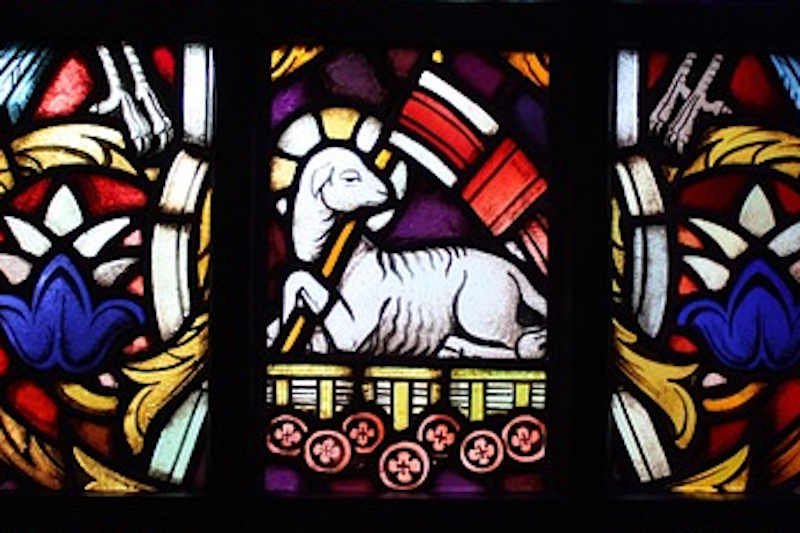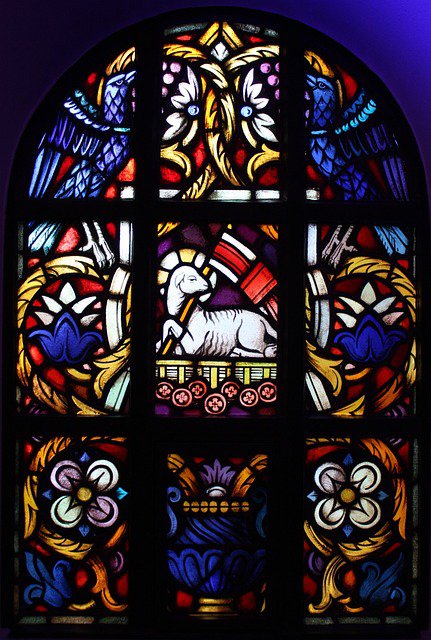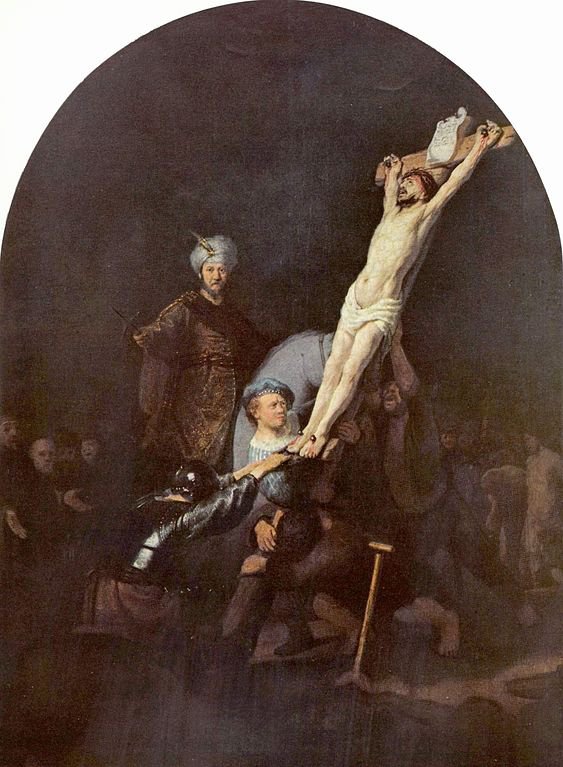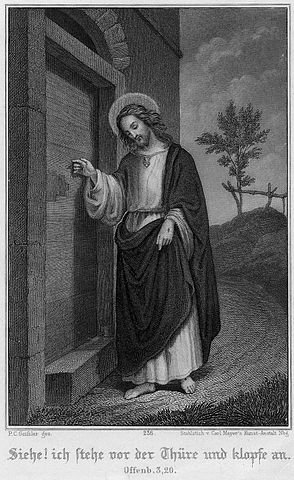
Dear Friends:
Today we hope to look at the consolation we have in Christ as depicted in the ancient Old Testament book of the prophet Isaiah in chapters 52-53. But here’s one verse from Isaiah which points back to that which Isaiah predicts in chapters 52-53. This verse aims to console those dealing with sorrow and despair but who trust in God’s promises in the Bible: Isaiah 60:20, “Your sun will never set again, and your moon will wane no more; the Lord will be your everlasting light, and your days of sorrow will end.” But how can this be so? It’s because of what God promised to do long ago, and did do, in Jesus.
Sorrows and despair can be such a big part of our lives—we feel guilty, we feel loss, we deal with sickness and dying, we disappoint others and ourselves. We are not the people we wish we could be. And we know that even the best of men and women, when they trust in themselves and not in the Lord, cannot resist the pull of our sinful, desperately self-centered hearts. We sense that there’s something really wrong with this world and with us—and this comes rushing in the moment we are confronted with the reality of pain, and sickness, and sorrow and evil. But what could possibly free us, so that all sorrow will end? How does it happen? Isaiah’s prophecy in these two chapters, a prophesy about a man who will come in perfect innocence like a lamb, will tell us.

Image by Dennis Gries from Pixabay
This passage from Isaiah 52 and 53 is so very like what is described in the Gospels of Matthew, Mark, Luke and John, only it’s in the Old Testament and was written 700 years before Christ was born in Bethlehem. It gives us such a detailed picture of the way God has ordained for our rescue—it’s a picture of Christ’s death and resurrection in the middle of the Hebrew Scriptures written centuries before the things described. Only the omnipotent and omniscient God of the Bible could show this, and He does so through the prophet Isaiah. Let’s read how this passage begins in Isaiah 52:13—
Behold, my servant shall act wisely;
he shall be high and lifted up,
and shall be exalted.
Do you see that the word “shall” occurs three times—it’s future tense, looking to a future time. The passage begins saying, Behold, look what’s going to happen! In some future time my servant “shall act wisely” and “he shall be high and lifted up and shall be exalted.” Let’s start with the central line and phrase: “high and lifted up.”
In John’s Gospel, written around 80 AD, 700 years after Isaiah’s prophecy, Jesus uses that same term—“lifted up”—three times. Something lifted up is high, right? But in John’s Gospel, when the text speaks of “lifting up,” it’s not about an exaltation to heaven above, nor is it about one of the kingdoms of men, as though it referred to a king on a throne or in a solemn entourage, walking “in state” as a king might do. Nor is it speaking of being such a great one that this “servant” will become a king over all the earth. No, in John’s gospel this term “lifted up,” which is predicted for this lamb-like one, the servant of Isaiah 52:13, something else entirely is spoken of, and this “something else” sets the tone for the entire passage, a “song of the suffering servant.”
Jesus introduces the term “lifted up” hundreds of years later in John 3:14: “And as Moses lifted up the serpent in the wilderness, so must the Son of Man be lifted up, that whoever believes in him may have eternal life.” What’s the context here? Jesus is talking to one of the most learned of the Jewish people of the day, Nicodemus, a member of the Sanhedrin, who has come to Jesus at night wondering who Jesus really is. Jesus speaks to him about being born again and Nicodemus just doesn’t understand. Jesus then says to him, “You’re a teacher of Israel, and you don’t understand these things?” Then Jesus tries another tack with him, referring to something Nicodemus knows very well—the Torah, the first five books of the Hebrew Bible, and specifically to the story in Numbers 21 in which Moses puts a brass serpent up on a pole—it’s lifted up high. There Moses tells all Israel to look at it and be saved from the plague of avenging serpents and in the text when they look, they are healed. Then Jesus tells Nicodemus that in this same way “the Son of man” will be lifted up. So we see a connection between the servant of Isaiah 52:13 and “the Son of Man,” which is Jesus’ favorite name for himself; both will be lifted up. Indeed, they’re the same person.
Then we see the term “lifted up” again in John 8:28: “So Jesus said to them, “When you have lifted up the Son of Man, then you will know that I am he, and that I do nothing on my own authority, but speak just as the Father taught me.” What is Jesus referring to when he speaks of “lifting up” the Son of Man? He’s referring to the same thing he meant when he used the term with Nicodemus in John 3:14, speaking of that serpent being lifted up on a pole. Jesus is saying he must be lifted up like that.
And then in John 12:32 we read that Jesus says this: “And I, when I am lifted up from the earth, will draw all people to myself.” What’s being referred to here? Now again this confirms the tone for the whole biblical poem of Isaiah 53, and it’s a reference to how this “Suffering Servant” would finish his work, his service to God. So this being “lifted up” is a central point regarding what the servant shall do, and it involves his suffering. These three verses are the “preface,” really, to the whole 15-verse poem.
But let’s look at the final line about the servant in the first verse of this poem which begins in Isaiah 52:13—the last of the things the prophet declares we should behold in the verse: “and shall be exalted.” Here we have a notion of what will happen after the lifting up we’ve just looked at. Notice that the speaker calls the servant “MY” servant. Who is this speaker? To answer this, we may look a bit more closely by turning to the notion of being exalted in Paul’s Epistle to the Ephesians, 1:20-23 and see if we might find a connection between Isaiah 52:13 and this passage from Paul:
….that he [that is, the Father], worked in Christ when he raised him from the dead and seated him at his right hand in the heavenly places, far above all rule and authority and power and dominion, and above every name that is named, not only in this age but also in the one to come. And he put all things under his feet and gave him as head over all things….
It’s hardly possible to imagine a greater exaltation than this, is it? After the “Suffering Servant” has been high and lifted up on Calvary’s Tree, then comes the burial, and then comes the exaltation of the resurrection and all that follows—the ultimate exaltation. But without His suffering in his being lifted up, that victory of exaltation cannot be.
So, then, we see a snapshot, right here in this first verse—in Isaiah 52:13—of all that is to follow in the redemptive story of mankind, and this is seen 700 years before the birth of Christ in this passage, a passage that’s all about God’s answer to the suffering and sorrow that so dominates the human situation.
But for all this to happen—the rescue of mankind by means of God’s “Suffering Servant” (the name theologians give to the person in this passage) who has come to bear the punishment we all deserve for sin—this divine Lord who is that servant has to take off His royal robes and come down into our rebellious and hard old world; this is what the Apostle Paul tells us in Philippians 2. The Lord Jesus humbled himself to take on human flesh in order to be lifted up before he would again be exalted to heaven.

The Raising of the Cross by Rembrandt, 1633. Rembrandt painted himself into the depiction (in the cap at the foot of Jesus), to represent his faith that without Christ’s sacrifice, His taking upon Himself the guilt and punishment for all his sins, he was lost. Rembrandt is acknowledging this very thing by posing himself helping crucify Jesus. Jesus’ sacrifice is perfectly depicted in Isaiah 52:13—53:12. Photo Public Domain.
Now, here’s one more word about the exaltation that was seen by the prophet to follow this “being lifted up.” This is found in Philippians 2:5-11, another of the letters of the Apostle Paul:
Christ Jesus, who, though he was in the form of God, did not count equality with God a thing to be grasped, but emptied himself, by taking the form of a servant, being born in the likeness of men. And being found in human form, he humbled himself by becoming obedient to the point of death, even death on a cross.
Paul the Apostle wrote of Jesus, “Therefore God has highly exalted him and bestowed on him the name that is above every name, so that at the name of Jesus every knee should bow....” It almost seems that Paul has Isaiah 52-53 in front of him as he wrote!
But now, right away, in the second verse of this 15-verse poem, we shift to the past tense, and the prophet is looking back from some distant future to the place of lifting up, which we now can say is the cross, and seeing there the suffering that will lie ahead as though it had just happened in the past. This is Isaiah 52:14:
As many were astonished at you—
his appearance was so marred, beyond human semblance,
and his form beyond that of the children of mankind—
Do you see the past tense here, “many were astonished”? Back in verse 13, it says “MY Servant shall act wisely. Now here in verse 14 we see that in doing so, in acting wisely, he has astonished many. It’s now past tense, but it allows us, 2,700 years after it was written, to look with the prophet backwards at the sufferings of this servant and we begin to wonder at him. The Hebrew word translated here as “astonished” is shaw-mu (שָׁמְמ֤וּ) and it means “to stun” or “stupefy” or “devastate” or “to make amazed in the most extreme way.” And the next part of verse 52:14 opens this up further: “his appearance was so marred, beyond human semblance.”
Many, it says, were this way when they saw him. We notice that the suffering servant is addressed in the 2nd person, “you”; it says, “Many were astonished at you!” God is saying through the prophet, who seems to be seeing the servant as though he’s just been at the cross and seen it all happen, speaking to the suffering one, “many were astonished at you,” that is, at Jesus.
And the next line of verse 52:14 begins to explain why there was such astonishment, but now it shifts quite plainly into the third person, describing his sufferings without addressing him, but he even might be addressing us, the readers of the poem—“his appearance was so marred.” His face and all his person was so marred (notice again it’s past tense, “was so marred” as though it’s already happened, though it was written 700 years before), that many who see it are shocked, so devastating a thing it is to see.
So what are we seeing here in Isaiah 52:13-14? It’s God saying to us, “Behold my servant, who shall act wisely,” with a wisdom so beyond us, because Jesus knew he had to go to that lonely wooden tower for our sakes. It behooves us to come to grips with that wisdom. In Revelation 13:8 it says, “the Lamb slain from the foundation of the world.” That’s who we see at the cross—the only true atoning sacrifice for sin—Jesus. The whole ancient Jewish sacrificial system points to this—the only sacrifice that actually atones for sin. Only 40 years later the Temple was destroyed and the sacrificial system ceased to exist; it was no longer necessary because it was fulfilled finally in what Christ did at the cross. We see from this quotation from the Book of Revelation that Jesus’ going to that cross was no accident, but something planned and known by him and his Father from the beginning of creation, for it says of Jesus that he was “the Lamb slain from the foundation of the world.”
The rest of the poem—I hope you will try to read it all (Isaiah 52:15 to 53:12)—shows plainly that there would be one who was to suffer in our place. He is crushed for what we have done that’s wrong. He was pierced for us (though he was wholly innocent) so that justice may be fulfilled and we may be forgiven our transgressions and thus restored to God. This is the good news! But how so? What Paul wrote in Romans 5:12, 15, helps us see: “Therefore, just as sin came into the world through one man, and death through sin, and so death spread to all men because all sinned….how much more did God’s grace and the gift that came by the grace of the one man, Jesus Christ, overflow to the many!” This same Jesus is even now saying to anyone who hears him, “Come to me and I will give you rest” (Matthew 11:28). In this good news you can even now find such comfort and consolation and such peace!
May this good news, and God’s promises, encourage and comfort us more and more!

Jesus stands at the door of each person’s heart. He is knocking at our door. Jesus Himself says, “Come to me, all you that labor and are heavy-laden, and I will give you rest” (Matthew 11:28-30). He would comfort us in all our trials and afflictions. Public Domain
This was written for the weekly devotional held in the Halo House chapel.